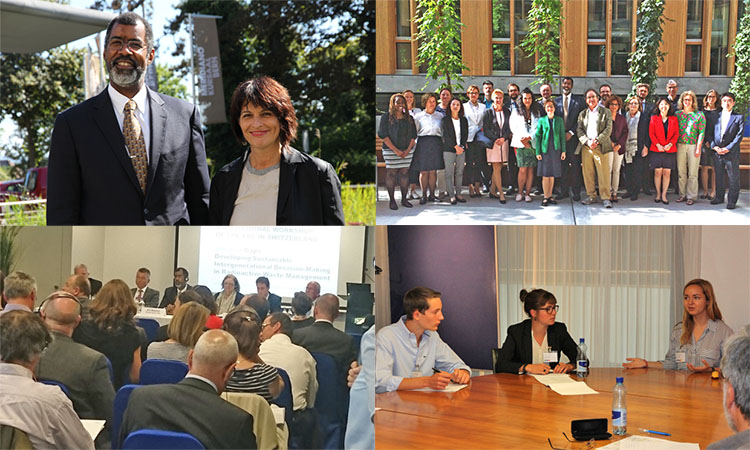 Developing sustainable decision making in radioactive waste management
Developing sustainable decision making in radioactive waste management
Participants from 14 countries explored how sustainable decisions can be developed in radioactive waste management at the 10th national workshop of the NEA Forum on Stakeholder Confidence (FSC). Focused on "Bridging Gaps – Developing Sustainable Intergenerational Decision Making in Radioactive Waste Management", the workshop took place on 7‑9 September 2016 in Bern, Switzerland with the support of the Swiss Federal Office of Energy (SFOE) and the participation of Swiss stakeholders. Opening remarks were delivered by the NEA Director‑General William D. Magwood, IV, and Swiss Federal Councillor Doris Leuthard. The workshop provided a forum for the participants from around the world to learn from each other's experiences and to discuss what can be done today to take sustainable decisions which can be understood and accepted by future generations. Participants included a wide range of stakeholders, including representatives from the Swiss Federal Office of Energy (SFOE), the Swiss Federal Nuclear Safety Inspectorate (ENSI) and the Swiss implementer Nagra (National Cooperative for the Disposal of Radioactive Waste), as well as representatives of local communities and members of the public concerned, including ten young people between the ages of 16 and 25.
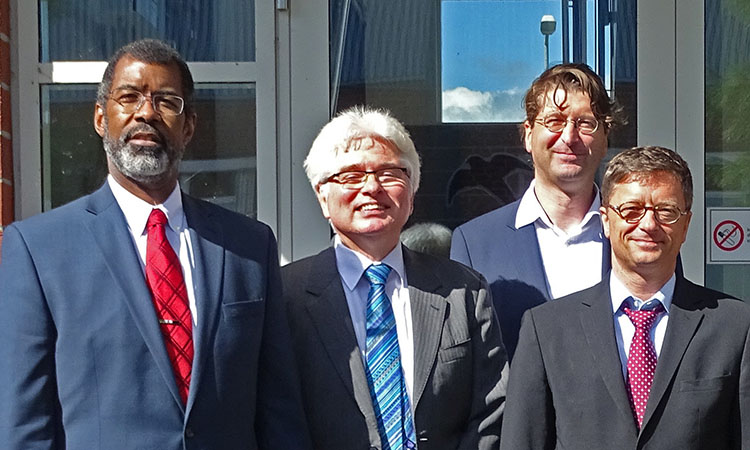 NEA Director‑General visits Germany
NEA Director‑General visits Germany
From 31 August to 1 September 2016, NEA Director‑General Mr William D. Magwood, IV was in Germany for a series of meetings with German ministries and research institutions. Central to his visit were discussions with senior officials from the Federal Ministry for Economic Affairs and Energy (BMWi) and the Federal Ministry for the Environment, Nature Conservation, Building and Nuclear Safety (BMUB), as well as from the German technical support organisation Gesellschaft für Anlagen und Reaktorsicherheit (GRS). While in Germany, the NEA Director-General and staff visited some of the country's leading research centres, decommissioning sites and other nuclear facilities, including Max Planck Institute for Plasma Physics (IPP), the FRM II research reactor, the Greifswald decommissioning site and the Isar II nuclear plant. On 31 August, he delivered a lecture on "Nuclear Science and Technology Challenges" to doctoral students and scientific staff at the Technical University of Munich (TUM). During his speech, he highlighted the importance of addressing the gaps in nuclear skills capacity building, knowledge transfer and technical innovation in an international context. The Director‑General's visit to Germany proved to be an excellent opportunity to obtain insights into the approach to nuclear safety in Germany and to exchange views on German nuclear science and technology issues.
|
|
Computational fluid dynamics for nuclear reactor safety
On 13-15 September 2016, the NEA Working Group on Analysis and Management of Accidents (WGAMA) held the sixth Computational Fluid Dynamics (CFD) for Nuclear Reactor Safety Applications (CFD4NRS-6) Conference in Cambridge, MA, United States. The biennial conference, initiated by the NEA Committee on the Safety of Nuclear Installations (CSNI), aims to present scientific advancements in the use of computational fluid dynamics for nuclear reactor safety. Hosted by the Massachusetts Institute of Technology (MIT), this year's event attracted 126 participants from 16 countries and featured four keynote lectures, 91 abstracts and 58 full papers. Active fields of research discussed at the conference included uncertainty quantification, two-phase flow and experimental methods for code validation. A visit was also organised to the MIT Nuclear Reactor Laboratory where the participants were able to tour the Thermal Hydraulics Laboratories, Mesoscale Nuclear Materials Laboratory and the Plasma Science and Fusion Center (PSFC). The WGAMA plans to organise the next CFD4NRS conference in 2018.
Developing geological repositories in salts
On 6 September 2016, the NEA Salt Club met in Washington, DC, United States. During this meeting, participants assessed the group's progress on various studies of the characteristics and properties of rock salts for the disposal of heat-generating radioactive waste. They discussed the thermodynamic treatments of actinide-borate interactions within the Pitzer Approach, the relevant Features, Events and Processes (FEP) that are crucial for developing geological repositories in salts, the effects of microbes in salt repositories and the mechanical behaviours of rock salts, as well as salt knowledge archives. The group expects to issue two technical reports in the coming months: one on the microbiology of subsurface, salt-based radioactive waste repositories, and another on the considerations of the differences between bedded and domal salt pertaining to disposal of heat‑generating radioactive waste.
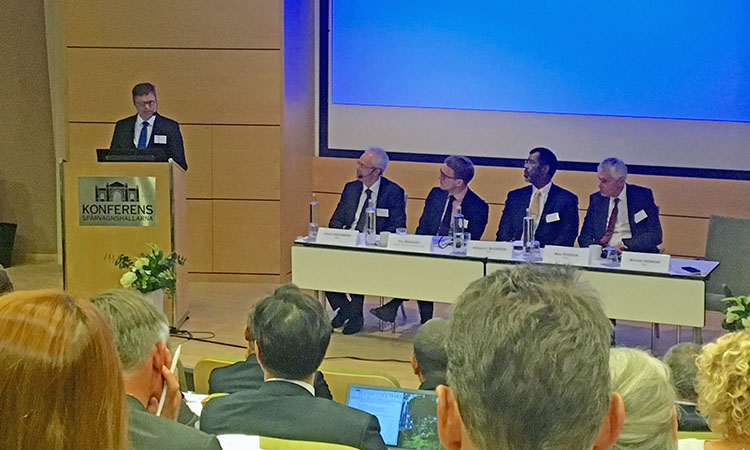 Discussions on the financing of decommissioning
Discussions on the financing of decommissioning
Nearly 100 participants from 18 countries and three international organisations convened in Stockholm, Sweden, on 20-21 September 2016 for the International Conference on Financing of Decommissioning, jointly organised by the NEA and the Swedish Radiation Safety Authority (SSM). Opening remarks and keynote speeches were delivered by the State Secretary of the Swedish Ministry of the Environment and Energy Per Ängquist, SSM Director‑General Mats Persson and NEA Director‑General William D. Magwood, IV. The conference programme featured a series of lively panels and Q&A sessions covering country‑specific decommissioning funding mechanisms, as well as various presentations on national and organisational approaches to cost estimation and improvement, and the management of associated risks. Benchmarking was considered a vital tool for estimate improvements and resolving specific conflicts related to transparency. The challenges associated with fluctuations in global markets and rates of return were also highlighted as major obstacles in ensuring adequate financial resources to cover all costs for decommissioning. Participants and panellists concluded that the conference made a major contribution to enhancing the understanding of the close interrelations between these challenges. They reaffirmed the continued benefits of information exchange among experts and international discussion fora, such as the NEA Decommissioning Cost Estimation Group (DCEG), and encouraged the NEA to organise a similar conference in the coming years.
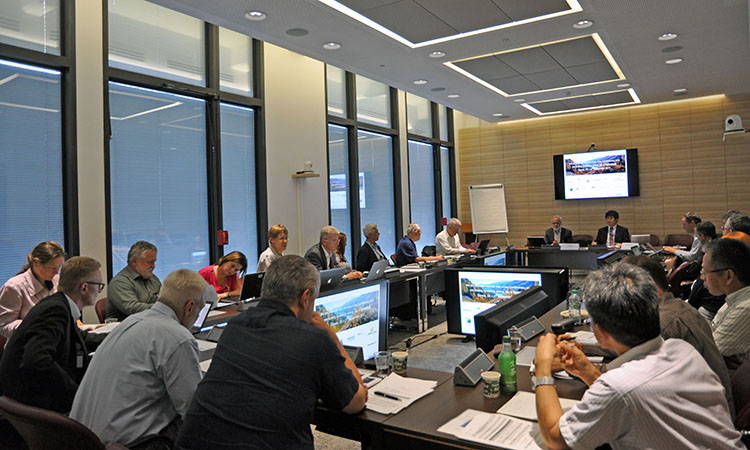 Examining argillaceous rocks for deep disposal of radioactive waste
Examining argillaceous rocks for deep disposal of radioactive waste
On 21-22 September 2016, the NEA Clay Club held its annual meeting. The NEA Clay Club was established in 1990 to examine technical and scientific issues of various argillaceous rocks for hosting deep geological repositories for long-lived radioactive waste. During this meeting, participants reviewed and discussed the group's progress on various studies of the characteristics and properties of sedimentary rocks. They also noted that the group will soon start a new project, the CLAYWAT Project, which aims at investigating the binding state of pore water in clays and shales. Another key highlight of the meeting was the topical session on "Site Specific Analogues – Under Pressure in Sedimentary Settings" which focused on fluid pressures as indicators of isolation. In order to continue their scientific research and studies, the participating members agreed to extend the group's mandate until December 2018.
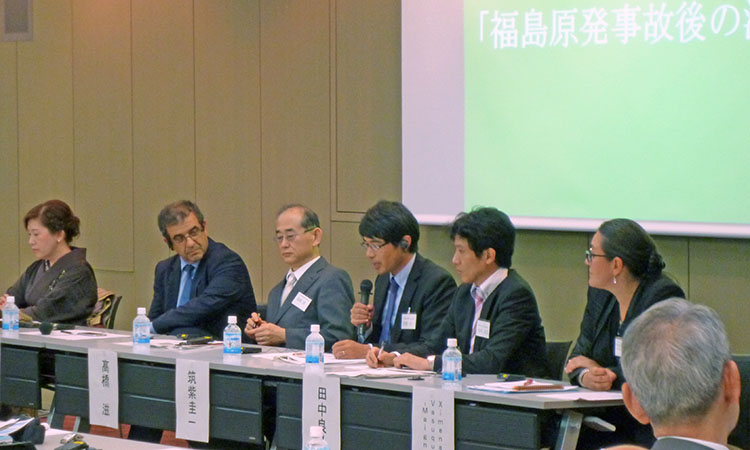 Fukushima nuclear power plant accident and law and policy
Fukushima nuclear power plant accident and law and policy
On 24-25 September 2016, the NEA participated in the Symposium on the Fukushima Nuclear Power Plant Accident and Law and Policy, organised in Tokyo, Japan, by Hitotsubashi University in co‑operation with the NEA. Dr Daniel Iracane, NEA Deputy Director‑General and Chief Nuclear Officer, delivered a keynoted speech on nuclear safety improvements and lessons learnt from the Fukushima Daiichi nuclear power plant accident. Along with legal experts from Asian countries and Germany, the NEA gave presentations on and participated in panel discussions relating to the lessons learnt regarding the compensation for nuclear damage and the structure and function of regulatory bodies. The symposium also addressed other legal issues, including the management of radioactive waste derived from the accident, financial mechanisms for decontamination and stakeholder involvement in selecting high‑level radioactive waste disposal sites.
|

On 6‑9 September 2016, the NEA Working Party on Scientific Issues of the Fuel Cycle (WPFC) held the third International Workshop on Technology and Components for Accelerator‑driven Systems (TCADS‑3) in Mito, Japan, hosted by the Japan Atomic Energy Agency (JAEA). The objective of this triennial workshop is to provide experts with a forum to present and discuss state‑of‑the‑art developments in the field of accelerator-driven systems (ADS) and neutron sources. The workshop was attended by 68 participants from 13 countries. During four days, more than 40 oral presentations were made, covering the R&D status on ADS‑including accelerators, neutron sources and sub‑critical systems for current facilities and future experimental and power systems; technology, engineering and research aspects of the above components; system optimisation for reducing capital and operational costs; and the role of ADS in advanced fuel cycles. ADS are considered as promising tools for the efficient transmutation of radioactive waste and a potential option for partitioning and transmutation strategies in an advanced nuclear fuel cycle. Over the last decades, ADS technology has been brought to maturity from conceptual design with large‑scale experiments and dedicated R&D. Since the last TCADS workshop held in 2013, cold test benches have been performed in several countries and hot tests are now foreseen. Although ADS are generally long‑term projects, significant technical progress is being made and experimental facilities are planned.
Nuclear multi-physics data, benchmarks and validation
The NEA Expert Group on Multi-physics Experimental Data, Benchmarks and Validation (EGMPEBV) met on 7‑8 September 2016. The meeting was attended by 28 participants from nine NEA member countries, who represented an increasingly diverse cross-section of code‑developers, researchers, industry and experimentalists from multiple disciplines of nuclear science. During the meeting, the Task Force on Multi-physics Validation Guidelines and Needs discussed new project proposals, including a phenomena identification and ranking table (PIRT) activity for several of the multi-physics challenge problems under the group's consideration. Initially these will be for pellet-clad material interaction (PCMI) and CRUD-induced power-shift and localised corrosion (CIPS/CILC) studies. Participants recognised the importance of these efforts to help meet the future requirements of the NEA Data Bank and its enhanced role for participating countries.
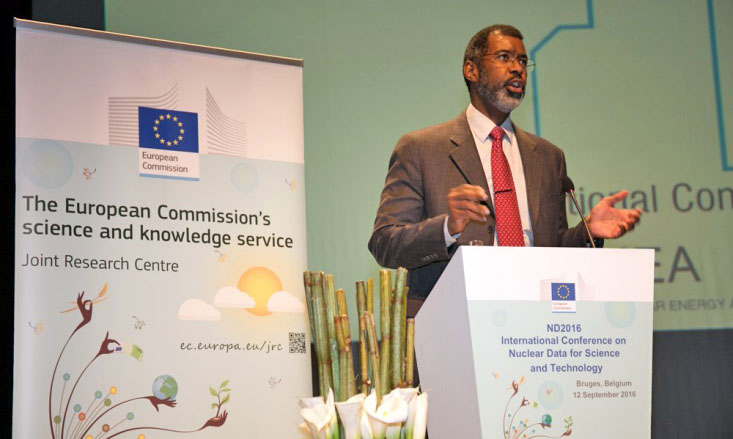 International collaboration on nuclear data research
International collaboration on nuclear data research
From 11 to 16 September 2016, the NEA participated in the ND2016 International Conference on Nuclear Data for Science and Technology, which is a leading event for the advancement of nuclear data in the interest of both science and technology. Co-organised by the NEA, the European Commission’s DG Joint Research Centre and the International Atomic Energy Agency (IAEA) in Bruges, Belgium, this year's conference was attended by more than 500 participants from 45 countries. The conference programme addressed a variety of active fields of investigation, including nuclear data measurements, nuclear theories and models, data evaluation and validation, integral experiments, and uncertainty quantifications for different areas of application. It also included nearly 500 presentations, several of which highlighted NEA Data Bank and NEA Nuclear Science Committee (NSC) activities, including the NEA Working Party on International Nuclear Data Evaluation Co-operation (WPEC). The event provided a good opportunity to present the NEA's efforts in developing new tools, including the Nuclear Data Sensitivity Tool (NDaST) and the Nuclear Data Evaluation Cycle (NDEC), and the significance of these tools in facilitating improvements to nuclear data evaluations was widely acknowledged.
19-SEP-16 |
SCALE 6.2.1, A Comprehensive Modeling and Simulation Suite for Nuclear Safety Analysis and Design |
|
16-SEP-16 |
SWORD 6.0, SoftWare for Optimization of Radiation Detectors |
An online archive of previous editions is available here.
The monthly bulletin only lists new and updated material. It is distributed by e-mail to registered users of the Nuclear Energy Agency's Online Services. Registration is free; please use this link.